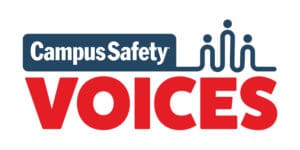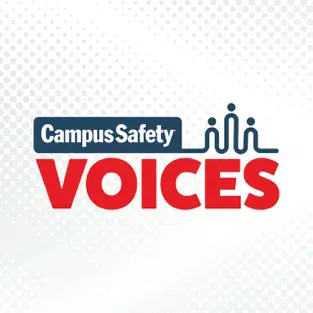Schools across the nation should always be looking for ways to improve security, but often those improvements involve expensive investments in technology and other safety and security measures. So how can K-12 campus protection professionals find the budget for these upgrades?

Campus Safety Voices, available on Spotify and Apple streaming platforms, features timely conversations on a wide range of topics affecting K-12 schools, institutions of higher education, and healthcare facilities.
To find out, I spoke with Mike Newton, who is director of safety and security for the Elizabeth School District in Elizabeth, Colorado. He installed new security cameras and other measures at all of the campuses in his district, resulting in $44,000 savings. That amount of savings is impressive, but particularly so considering Newton works for a small rural school district that has only about 2,200 students on five campuses.
This is just one of the reasons why he is one of this year’s Campus Safety Director of the Year finalists.
When Newton first came to Elizabeth, he quickly realized that he needed to practically start from scratch as far as the district’s safety and security efforts were concerned. He began by conducting two risk assessments of the schools.
“What this did was identify key areas for growth and improvement,” he said. “A few of the key areas that I originally noticed were exterior door signage and cameras. I immediately met with our key stakeholders and explained the impact these improvements were going to have and how it was going to impact them on a day-to-day basis.”
Newton and his team then installed 140 new exterior door signs, which helps first responders quickly locate classrooms and other rooms on campus during emergencies. This signage is integrated with the district’s tactical and electronic floorplan system that’s shared with first responders so they can pull the location information up on their CAD systems.
[promo_content slug=”2023-doy-winner-announced-at-csc”]
Wayfinding signs for visitors were also installed to help guests understand where and when they should and should not go on campus. Other types of signs were also installed… all to convey territoriality, expectations of visitor behavior on campus, and the school’s sense of ownership of the property.
Newton and his team also installed an enterprise video surveillance system, deploying security cameras in key vulnerable areas in the district. The new system replaced the district’s old analog security cameras.
So how did the district pay for these and other safety upgrades, such as visitor management and access control?
Grants helped pay for some of them, but many of the upgrades were completed in-house. For example, all of the signage was installed by district facilities personnel.
“You’d be amazed at how much it costs to outsource that labor to do something as simple as hanging up a sign,” said Newton.
The biggest savings came with the installation of security cameras. Newton had previous experience installing cables, setting IP addresses, and programming hardware for security systems, so he drew on that experience to do much of the cable pulling himself.
“It allowed us to get more product for less money,” he said.
Below are the questions and interview time stamps, so you can watch/listen to the specific details of Newton’s upgrade strategy:
- What prompted the installation of cameras, signage and door numbers, and what was specifically installed/implemented: 2:12
- How these upgrades improved safety and security: 7:10
- How the $44,000 cost savings were achieved: 15:11
- Advice for other districts wanting to make these types of safety and security improvements while achieving cost savings: 18:24
Watch the full interview here or listen on the go on Apple or Spotify.
- Like us on Facebook: https://www.facebook.com/campussafety…
- Follow us on LinkedIn: https://www.linkedin.com/groups/1836305/
- Follow us on Twitter: https://twitter.com/CampusSafetyMag
- Sign up for our free newsletters: https://www.campussafetymagazine.com/…









